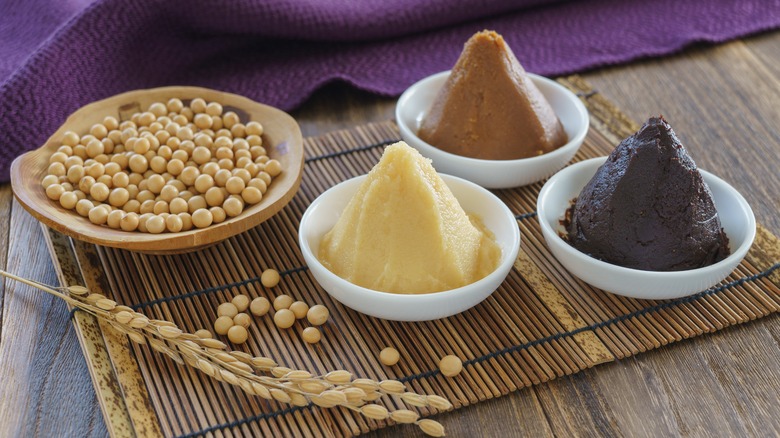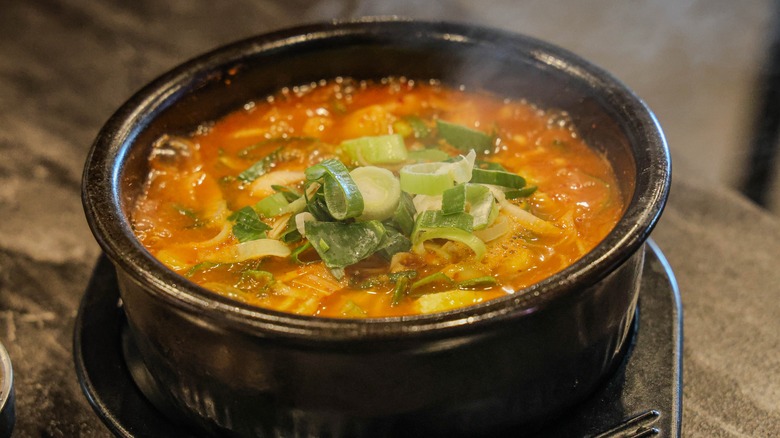The Best Umami Substitutes For Miso, According To A Chef
We may receive a commission on purchases made from links.
Miso, that traditional Japanese cooking ingredient we mostly associate with broth or soup, is so much more than a seasoning. An essential component of Japanese cooking, this mix of fermented soybeans, grains, salt, and a fungus called koji is key to developing the savory, salty, rich umami in dishes like ramen, yakitori, and hot pot. The darker the miso, the more umami it brings, and depending on the type of koji used and the fermentation process, the deeper the flavors. Miso's depth is difficult to match, and so we asked James Bailey, executive chef of Momofuku Las Vegas, what would be a suitable substitute for the umami in miso. "Texturally, it's hard to replicate what miso can add since it's a paste that brings tons of flavor, but Korean doenjang is the closest substitute with a bit more texture and funk," he said.
Doenjang, the Korean counterpart to miso, is also a fermented soybean paste minus the grains. The ingredient is usually thicker than miso, with a coarser texture. Making doenjang takes some patience, so keeping prepared doenjang from the market is a common practice for Asian cooks. Doenjang is the basis for the Korean soup doenjang jjigae and can be used in everything from dressings to scallion pancakes. The richer flavor of daenjang is a great replacement for the darker red miso.
Other umami-rich add-ins instead of miso
Looking for an extra boost of umami in certain dishes could require a more delicate layer of flavor. If you're trying to avoid an overpowering or more aggressive taste in your dish, there are substitutes for miso that provide a softer landing. "If you're straying away from anything miso-adjacent, soy sauce, yondu, fish sauce, shio koji, or even just straight-up MSG will fill in for the umami that miso adds," Chef James Bailey advised.
Shio koji is considered a good replacement for miso because of the presence of koji fungus in the paste. Like miso, shio koji is allowed to ferment, creating a sour pungency that most closely replicates the umami in miso. Much like shio koji, yondu is a natural flavor enhancer. Made from soybeans and vegetables, yondu can be used in cooking and as a condiment. Because of its amino acids and peptides, yondu suffuses food with a savory umami that can be simmered in or added at the table. It can be used in everything from rice dishes to pasta, and it's a perfect vegan go-to as a condiment.
Another surprising umami stand-in is dehydrated scallops. As a substitute for miso when making hot pot, dried scallops can provide a pungent but slightly sweet element to food. Fish sauce, a common condiment for home cooks, provides a similar umami profile to miso. Taste it first, because it can be unduly salty, and the fish flavor is good only for certain recipes.

